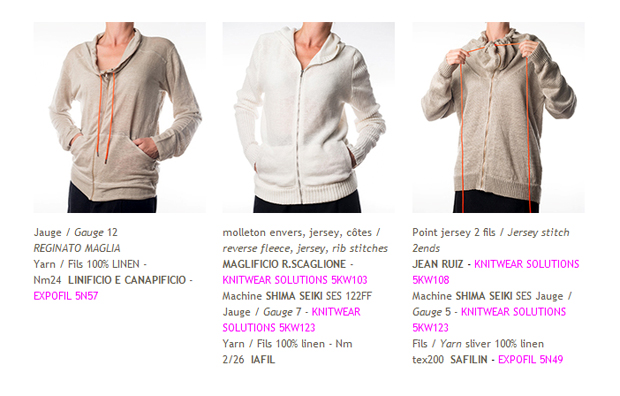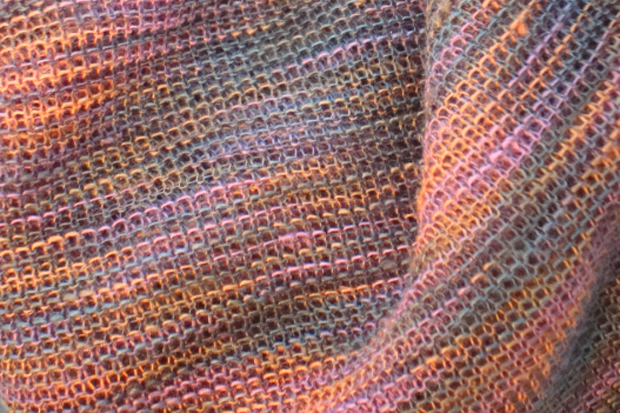
Hohenstein tests meet European guidelines for community masks
European Flax, a new initiative by the European Confederation of Linen and Hemp (CELC) aimed at boosting the image of European linen in Japan, supporting it in India and creating it in China, a country which is expected to rank second in the world’s luxury market by 2017, was launched in October.

1st November 2012
Knitting Industry
|
Brussels
European Flax, a new initiative by the European Confederation of Linen and Hemp (CELC) aimed at boosting the image of European linen in Japan, supporting it in India and creating it in China, a country which is expected to rank second in the world’s luxury market by 2017, was launched in October.
CELC, the only European agro-industrial organization federating all the stages of production and transformation for linen and hemp, launched its European Flax brand at its 1st International Congress which was held on the 18th and 19th October 2012 in Brussels, attended by almost 200 delegates.
For the very first time almost 80% of the upstream global flax industry came together with three Asian delegations taking part – CBLFTA from China, ASABO from Japan and India’s Linen Club (Aditya Birla Group) with almost 80 delegates – all major players in their industries.
European Flax is a label which aims to guarantee the quality of European linen fibre in all market sectors that preserves the uniqueness of European agriculture. It simultaneously aims 'to promote and safeguard a regional origin and know-how that can be sure to flourish far beyond the borders of the region of production'.
“This is an ambitious signature designed to be identified by the final consumer who is open to the commitments of European Flax and its Charter that is signed by all European producers: Zero Irrigation, Zero GMO, Zero waste. The first examples will be seen in Spring 2013 in a number of pilot companies,” CELC says.
The bulk of European flax is grown in a wide coastal band of Western Europe stretching from the South of Normandy in Northern France through Belgium and the Netherlands - from Caen to Amsterdam and is the only plant based textile fibre originating on the continent. Its excellent quality is said to be achieved through a unique combination of a natural, damp ocean climate, flax’s low thermal density, a rich soil and the experience of the flax growers themselves.
Click to enlarge
Thousands of companies in 14 European Union countries are involved in the flax or linen industry, from plant to finished fabrics and garments and 85% of the world’s production of scutched (preparation for spinning) flax fibres are said to be originated from 90,000 hectares in Europe. Flax represents less than 1% of all textile fibres consumed worldwide.
Margin for all trades
Opening the international congress, CELC President, Frédéric Douchy told delegates that he wanted a ‘margin for all trades’ within the industry so that all can be profitable. He said that this would require stable prices, a key CELC objective. Other objectives, he said, were establishing markets for linen in fashion and in composites which would require certification.
CELC team members Julie Pariset and Marie Demaegot presented an assessment of the organisation’s promotional efforts in both B2B and B2C markets. Conclusions included the desire to intensify Japan market efforts and the need for further training for buyers generally. Creasing remains an issue, particularly in home textiles where linen items still need ironing and although stretch linen textiles are being developed, more work is required.
The CELC team also reported on knitting activities including the launch of a Masters of Linen knitwear collection at Premiere Vision in September. (Read more at 'Knitting Linen' showcase at Première Vision). CELC wants to develop linen knits further and go way beyond t-shirts and simple knits as knitwear accounts for around 20% of the apparel market.

‘Decrease creasing’ was the main message in the CELC team presentation, coupled with the aim of converting linen into a ‘four season wardrobe’ product.
India’s Aditya Birla, a $40 billion business which has an $85 million textiles business, is the world’s largest viscose staple fibre producer and is also a huge importer of European flax. Its Linen Club product range dominates the Indian linen market with a 75% market share.
CEO Thomas Varghese told delegates that CELC should do for linen what Woolmark has done for the Australian wool industry. “As a rule,” he said, “Wool accounts for 2% of world fibre production and flax for 1%, half of that of wool.” He said that currently flax fibre is difficult to buy. Whereas with wool, the buyer can define the count he wants to buy. He called for a new approach to standards for flax.
“Investment in research and development and new product development is very important. Another good example is Cotton Incorporated. What they have done is an inspiration,” Mr Varghese said. “We need to increase the size of the pie – investment in research and development is everything,” he added.
Srinivasan Krishnamoorthy , President of the textile division, enthusing about the demand for the group’s linen apparel in India, summed up with a company slogan: “Cotton is for strivers and linen is for achievers.”
Mr Xu Jixiang, President of the Chinese linen association CBLFTA gave a presentation on linen promotion in China. “Two million RMB ($320k) have been invested for development of the domestic market on exhibitions and other promotional activities,” he said. Events which the organisation took part in included China’s International Festival of Fashion, where linen apparel was showcased.
Mr Xu Jixiang said there was a need to develop quality bands in the country and called on CELC to help raise funds to achieve this aim. In addition he said that an international standard was required for linen and asked European scutchers to stabilise flax prices.

Mr Tokiaki Iida, Chairman of ASABO the Japanese linen promotional organisation, gave a detailed account of recent promotional activities in his country, demonstrating a clear vision for the future of the fibre.
Mr Iida commenced by explaining that the linen producing industry in Japan was small and that the country’s linen spinners had almost disappeared altogether. He added that there was until recently no linen innovation in the country and that innovation as well as fibre had to be imported. ASABO’s main objective is now to create better awareness of linen in Japan.
He said that linen was now beginning to be appreciated in Japan for its eco credentials and was regarded as a high quality natural fibre. “As in Western countries, there is a growing recognition in Japan that linen contributes comfort and richness to daily life.” Mr Iida said.

ASABO’s president explained that senior citizens are expected to become the driving force as consumers of linen products in Japan, because: “The proportion of seniors in Japan, which is already the highest in the world, continues to grow and wealthy senior citizens, who have time and cash to spend, appreciate a high quality of life.”
Mr Iida concluded by saying that ASABO was a young organisation which has many ambitions. He would like to see a Linen Dream Lab in Japan like those in Paris in Milan and asked for CELC support in developing the Japanese market, which could become a major market for linen.
Linen knits featured quite strongly in CELC’s 1st International Congress and staying on the Japanese theme, an interesting presentation was given by ASABO member Kenland, a Japanese knitwear manufacturer founded in 1948. The Yamagata City based knitter uses both flat and circular knitting technologies to produce thoughtful and colourful knits in linen and linen blend yarns which it develops with a Japanese linen spinner.

The Kenland Linen brand, which was started in 2010 and is made from European Flax, is completely developed in house by father and daughter team Shuichi and Yuko Onuma – Kenland’s respective Technical Creative Directors. Kenland also collaborates with Japanese designers including the legendary technology driven clothing designer Issey Miyake - according to Mr Onuma, Miyake says that linen should be used much more widely in Japan.
Speaking to Knitting Industry at the Congress, Christian Mekerke, CEO at Lille headquartered linen spinner Safilin confirmed the rise in demand for linen knits. Five years ago Safilin’s yarns all went into wovens but now around 20% of the company’s turnover comes from yarns for linen knits. Safilin is the largest Europe based linen spinner employing around 400 people at its spinning mills in Poland.
CELC President, Frédéric Douchy summed up CELC’s 1st International Congress elegantly:
“Today was an outstanding day. We can now see that our industry is truly international industry.”
“The main teachings were the presentation from the European commission which confirms our platform works and that support is needed. We have also listened to the requests from Mr Varghese from India and from our colleagues in China about the need for support. My congratulations also go to the CELC team. We have achieved amazing results,” he added.
“Other lessons today were the need for stable prices, the need for visibility through fashion brands and geographical growth. The rise in knitted fabrics as a result of research and development is also important and linen is definitely important for designers in future. Evidence of that is the Philippe Stark furniture project and our technical projects are convincing users.”
“As our colleague from India said earlier – ‘Cotton is for strivers, linen is for achievers’ - there is a great future for our noble fibre and this is only the beginning.”

Business intelligence for the fibre, textiles and apparel industries: technologies, innovations, markets, investments, trade policy, sourcing, strategy...
Find out more